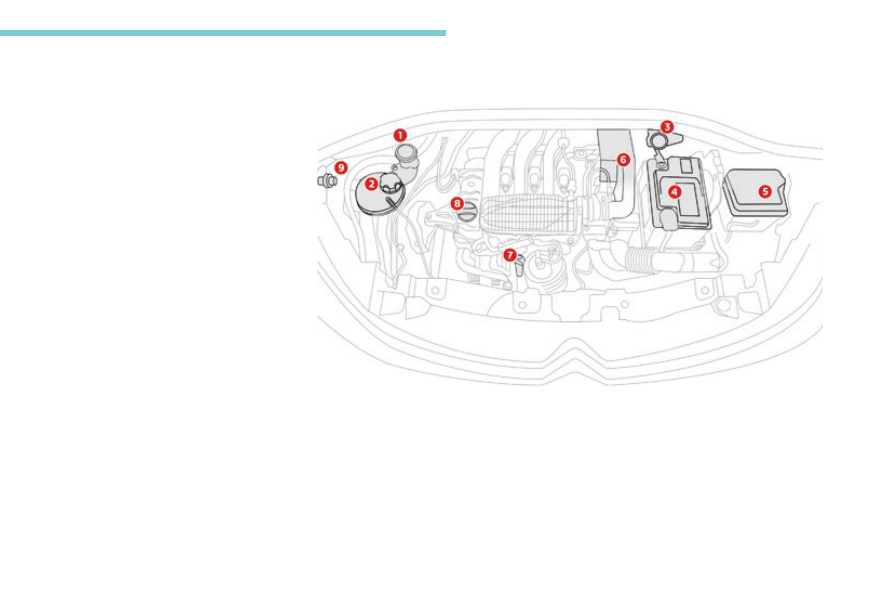Citroen C3 (2017 year). Instruction - part 14

207
7
Practical information
B618_en_Chap07_info-pratiques_ed01-2016
1.
Screenwash fluid reservoir.
2.
Coolant header tank.
3.
Brake fluid reservoir.
4.
Battery.
5.
Fusebox.
6.
Air filter.
7.
Engine oil dipstick.
8.
Engine oil filler cap.
9.
Remote earth point.
Petrol engines